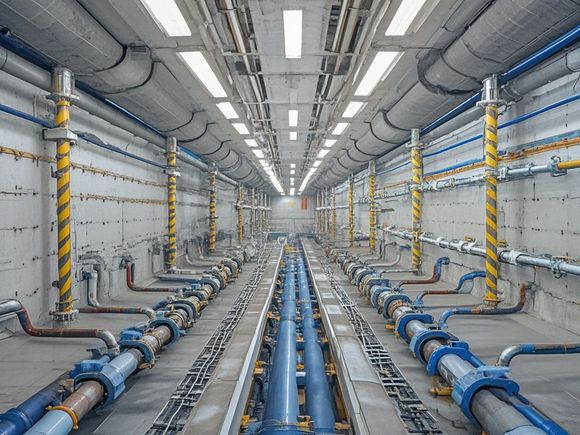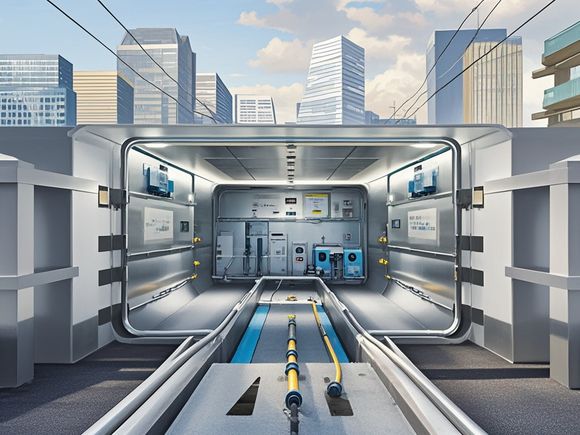Ensuring Safety and Efficiency in Trenchless Pipe Installation: The Role of Monitoring Systems
Content:
Hey there, fellow industry professionals! Today, I want to talk about a topic that's near and dear to my heart – the integration of advanced monitoring systems in trenchless pipe installation, specifically in the context of underground utility infrastructure.
Now, if you've been in the game for a while, you know that safety and efficiency are paramount when it comes to managing underground utility networks. And that's where these monitoring systems come into play. They're like the eyes and ears of our operations, keeping a close watch on everything from the integrity of our pipes to the performance of our construction equipment.
But let's face it, the world of underground utilities is vast and complex. There are a lot of moving parts, and keeping track of them all can be a real challenge. That's where these monitoring systems shine. They provide real-time data and insights that help us make informed decisions on the fly, ensuring that our projects stay on track and our workers stay safe.

Take, for example, the installation of a new sewer line using horizontal directional drilling (HDD). With a robust monitoring system in place, we can track the progress of the drill head as it navigates through the earth. We can monitor the torque and pullback forces to ensure that we're not exceeding safe operating parameters. And in the event of an issue, like hitting an unexpected obstacle, we can quickly adjust our approach to avoid damage to the surrounding environment.
But it's not just about the equipment; it's also about the health and safety of our workers. Monitoring systems can help us detect potential hazards, like gas leaks or unstable soil conditions, before they become serious issues. This allows us to take proactive measures to protect our team and prevent accidents.
And let's not forget about the long-term benefits. Once the pipes are in place, these systems can continue to provide valuable information on the condition of the infrastructure. This data can be used for predictive maintenance, helping us to identify potential issues before they lead to costly failures or service disruptions.
In conclusion, the role of monitoring systems in trenchless pipe installation is crucial for maintaining safety and efficiency in our operations. They offer a level of oversight and insight that was once impossible, empowering us to make better decisions and operate with a higher level of confidence. So, if you're looking to take your underground utility projects to the next level, it's time to invest in the power of monitoring. Your team, your project, and your bottom line will thank you for it.
Stay safe out there, and let's continue to push the boundaries of what's possible in our industry!
Content expansion reading:
As we delve into an era where technology has revolutionized every aspect of life, the realm of construction and infrastructure development continues to flourish. In this context, underground utility tunnels have emerged as a crucial component in the growth of modern society. These tunnels not only provide essential services such as water, electricity, gas, and telecommunications to communities but also enhance the overall safety and security of the urban landscape. In this article, we will explore the significance of underground utility tunnel construction and its role in promoting economic growth and social progress.
Underground utility tunnels are designed to carry water, gas, electricity, and other essential services from the surface to the buildings or homes located beneath. They serve as a vital link between the natural environment and human settlements, ensuring that these critical resources reach their intended destinations without interruption. This is particularly important during times of drought or when natural disasters disrupt the flow of resources. The construction of underground utility tunnels plays a crucial role in maintaining the stability and sustainability of our cities, enabling us to thrive in the face of adversity.
The construction of underground utility tunnels involves a complex process that requires expertise and precision. It begins with the identification of potential sites for tunnels based on geological surveys, soil testing, and other evaluations. Once the location is confirmed, a detailed design plan is developed that outlines the layout, dimensions, and materials required for the tunnel. This includes the selection of the appropriate type of soil and foundation work, as well as the installation of drainage systems and other safety features.

Once the design is complete, the construction process begins. The first phase involves excavation, which involves removing the top layer of earth to create a deep shaft. The second phase involves reinforcing the shaft with steel or concrete to provide structural support. Finally, the third phase involves installing the lining system, which consists of pipes, valves, and other components that carry the essential services to the buildings below.
The construction of underground utility tunnels is not just a technical endeavor; it also requires collaboration and communication between various stakeholders. Engineers, contractors, and community members all play a vital role in ensuring that the project is completed on time and within budget. The construction of underground utility tunnels is often challenging, requiring skilled labor and equipment to navigate through difficult terrain and weather conditions. However, the benefits of these projects are significant, including improved infrastructure, increased energy efficiency, and reduced environmental impact.
In addition to their practical benefits, underground utility tunnels also have a significant impact on the economy and social fabric of a community. By providing reliable access to water, electricity, and other essential services, they contribute to the growth and success of businesses, industries, and communities alike. The construction of underground utility tunnels creates jobs in various sectors, from engineering and construction to maintenance and management. These jobs not only support local economies but also attract investment and expansion opportunities, further boosting economic growth.
Moreover, the construction of underground utility tunnels promotes social integration and cohesion within communities. As people rely more heavily on these essential services, they become more aware of the importance of their shared infrastructure and are more likely to participate in community-based initiatives that benefit everyone. For example, neighborhood associations or residents' groups may organize cleanup campaigns or educational workshops to raise awareness about the need for regular maintenance and inspection of the tunnels. These efforts not only improve public safety but also foster a sense of pride and ownership among residents, contributing to a stronger sense of community identity.
Another significant benefit of underground utility tunnel construction is its ability to enhance the resilience and adaptability of a community. When faced with natural disasters or other emergencies, having reliable access to essential services can make a significant difference in terms of saving lives and preventing further damage. For example, during hurricanes or floods, access to clean water and electricity becomes critical, and underground utility tunnels can provide a reliable source of both. Similarly, during power outages, access to gas and water supplies becomes essential to maintaining basic needs and avoiding panic and confusion. By investing in infrastructure that is resilient enough to withstand natural disasters, communities can better prepare for and recover from such events, enhancing their overall resilience and adaptability.
Finally, the construction of underground utility tunnels is an investment in the future of society. While the initial costs of construction can be substantial, the long-term benefits far exceed the short-term financial gains. These benefits include improved infrastructure, enhanced energy efficiency, reduced pollution and waste, and a healthier environment for current and future generations. By prioritizing the construction of underground utility tunnels, we can ensure that our cities remain livable and sustainable for generations to come.
In conclusion, the construction of underground utility tunnels is a critical component of modern society that plays a significant role in promoting economic growth, social progress, and overall well-being of communities. From improving infrastructure to enhancing energy efficiency to reducing environmental impact and improving public safety, these projects offer numerous benefits that cannot be ignored. As we continue to invest in this vital infrastructure, we can look forward to a brighter, more prosperous future for ourselves and our descendants.
Articles related to the knowledge points of this article:
The Role of Comprehensive Monitoring Platforms in International Trade Operations
Ensuring Safety and Efficiency in Underground Pipelines: The Role of Environmental Monitoring
Understanding the Role of a Conduit Monitoring Center in Modern Infrastructure
Why Monitoring Your Supply Chain is Crucial for Success
Ensuring Safety and Efficiency in Pipelines: The Key Points of Environmental Monitoring Systems
Effortless Environmental Monitoring: Access the Cloud Platform Now!